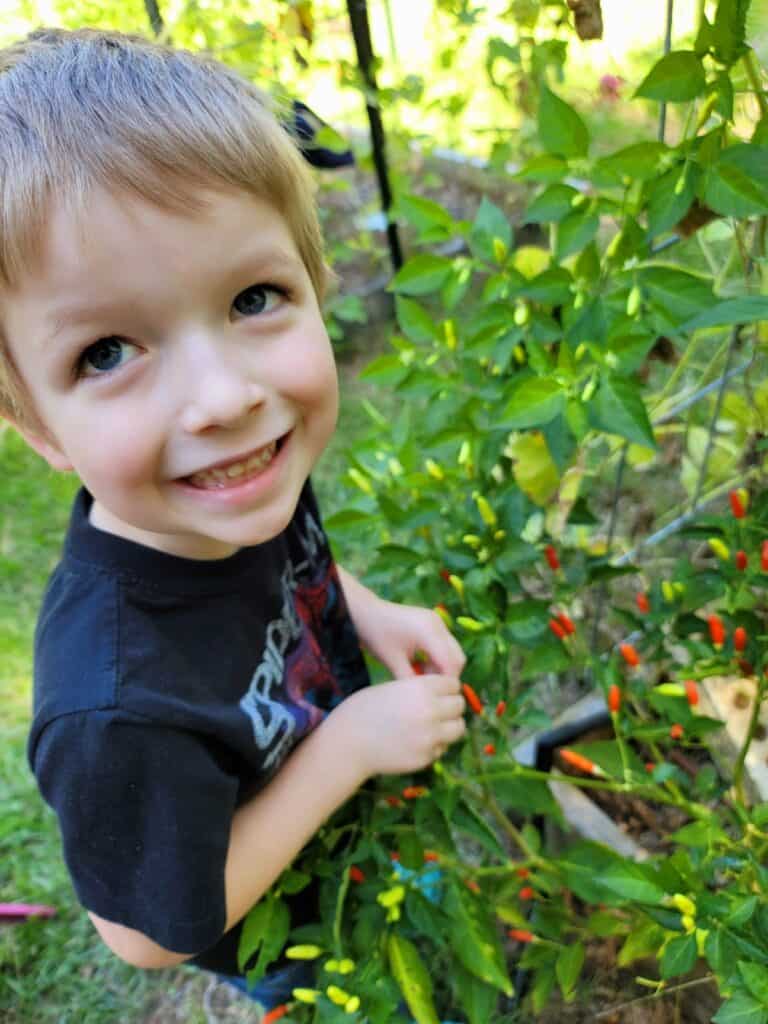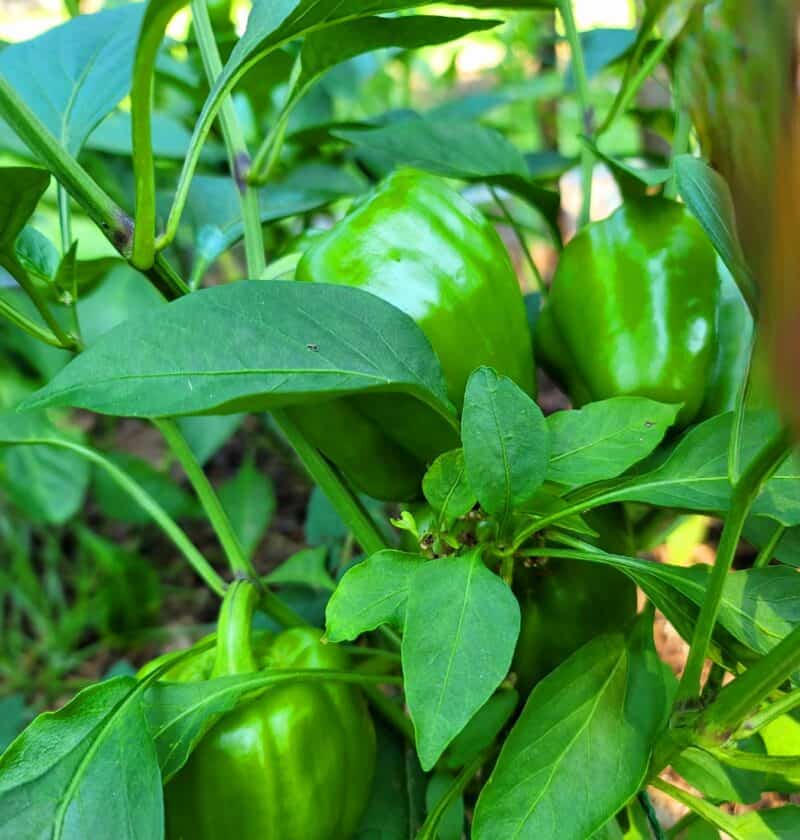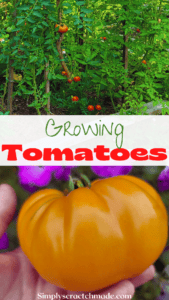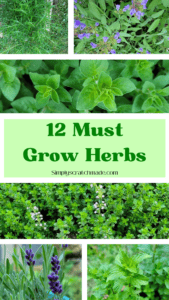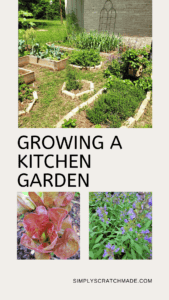From sweet peppers to hot peppers, this nutritious and versatile plant deserves a spot in in every garden. If you are new to growing peppers, this post is a great place to start. I’m excited to share with you the tips I have learned through my growing seasons on how to grow this delicious fruit.
Peppers are one of my must have plants in the garden every year. I grow several different varieties of sweet peppers and just a few spicy ones. I love the beautiful colors and different textures peppers have. We use peppers in many different recipes from candied jalapeños to sweet potato hash. I have a post on how to freeze peppers that may be helpful when you are bringing in a ton of peppers this gardening season.
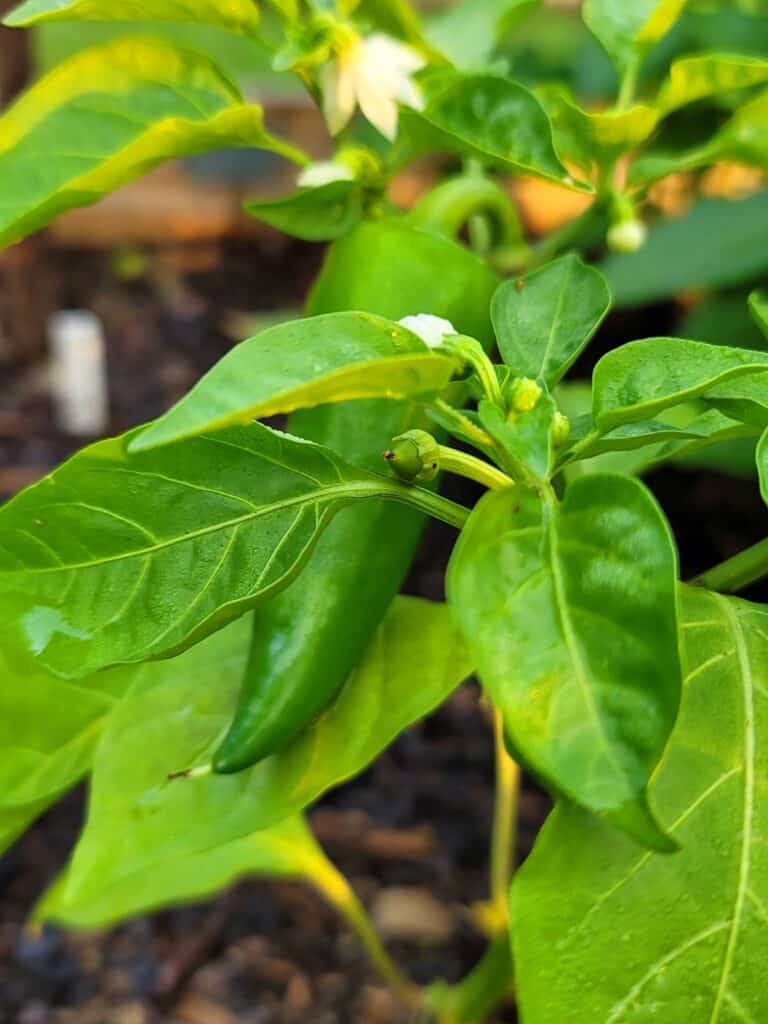
There are so many peppers varieties to choose from. So many more than you are probably aware of. It is pretty easy to look at seed catalogs and want to order all of the different varieties, we’ve all been there, but when starting out I recommend growing varieties you are familiar with. Add in 1 or 2 new ones each year to discover what you like.
A few of my favorite varieties to grow are, Craig’s Grande Jalapeño, Bull Nose Bell Peppers, Sweet Banana Peppers, Nadapenos and Ancho Grande Poblano.

Planting Peppers
When To Plant
Peppers thrive in warm weather. It is important to wait to plant peppers until the nighttime temperatures are consistently in the mid-60s and all chances of frost have passed. You can search your areas last expected frost date to get an idea of when to plant your peppers. I like to use The Farmer’s Almanac. I also like to wait to plant my peppers 1-2 weeks after I have planted my tomato plants. They usually grow better when the soil has warmed up. In the past when I have planted my peppers at the same time as my tomatoes they have not performed as well. I imagine this is because peppers like warm soil as much as they like warm air. The ideal soil temperature for growing peppers is 60° F – 65° F.
Pepper plants that are planted too early will be stunted and not produce as much fruit as plants that are planted when the temperatures are right.
Where To Plant
Pepper plants need to be planted in a well-draining sunny area. For the best growth and production plant your pepper plants in an area where they will receive 6-8 hours of direct sunlight.
How To Plant
Pepper plants need at least 12-inches all the way around each plant to thrive. Some recommend giving pepper plants more room to grow, but I find that pepper plants grow well when planted “shoulder to shoulder”. 12-inches of growing space is enough room for healthy root development, plants are not competing for nutrients and allows for more space for growing other plants.
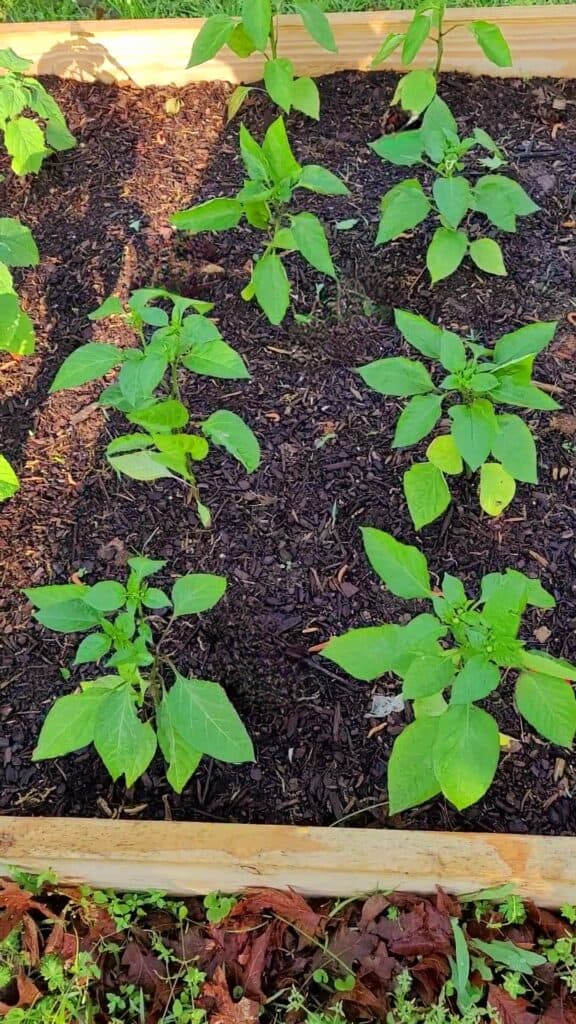
Like planting tomatoes, I like to plant my pepper plants deep. Not quite as deep as tomatoes, just a few inches deeper than the pot they are in. This helps pepper plants grow stronger and sturdier.
Caring for Pepper Plants
Supporting Plants
Pepper plants need to be staked or caged. Because their fruit becomes heavy, the branches will sag to the ground, or the entire plant may fall over. Large tomato cages are great for supporting pepper plants. Using stakes or old branches are also great for staking pepper plants.
Pruning Pepper Plants
Pinching the first blooms after planting is a great way to encourage your pepper plants to grow healthier instead of focusing on fruit production as soon as they are planted. Plants can become stressed when transplanted, pinching the first blossoms converts their energy to more growth. I like to wait to let fruit set until the plants have been in the ground, and thriving, for at least two weeks.
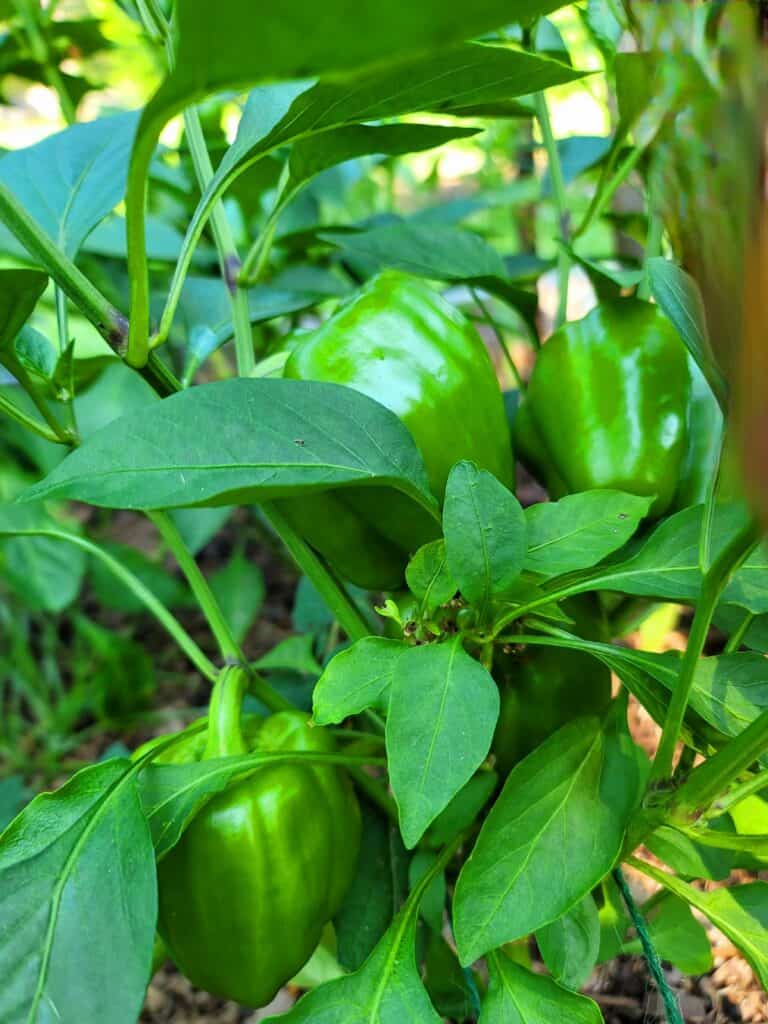
Watering Pepper Plants
Water when the top 1 inch of soil is dry. Water the roots deeply to encourage root development. To check if your plant needs water simply test the soil for moisture. Feel the top 1-inch of soil, if the soil is moist don’t water. If it is dry, give the plant a deep watering. Plants benefit more from deep watering than they do from shallow watering. Deep watering encourages the roots to grow down in search of nutrients instead of close to the surface.
Fertilizing Pepper Plants
Amending your soil with fresh compost each growing season is the best way to add nutrients to your soil. I focus a lot on soil health, which I believe really makes a bountiful garden. When it comes to using fertilizers, I like to use all natural fertilizers, typically when I plant out my transplants. I add bone meal, blood meal, eggs shells and worm castings to each hole when I transplant out my plants. Throughout the season I give my plants a little boost with a mixture of fish emulsion and water. The only other time I fertilize is when I see a plant struggling. Healthy soil is enough to grow healthy plants.
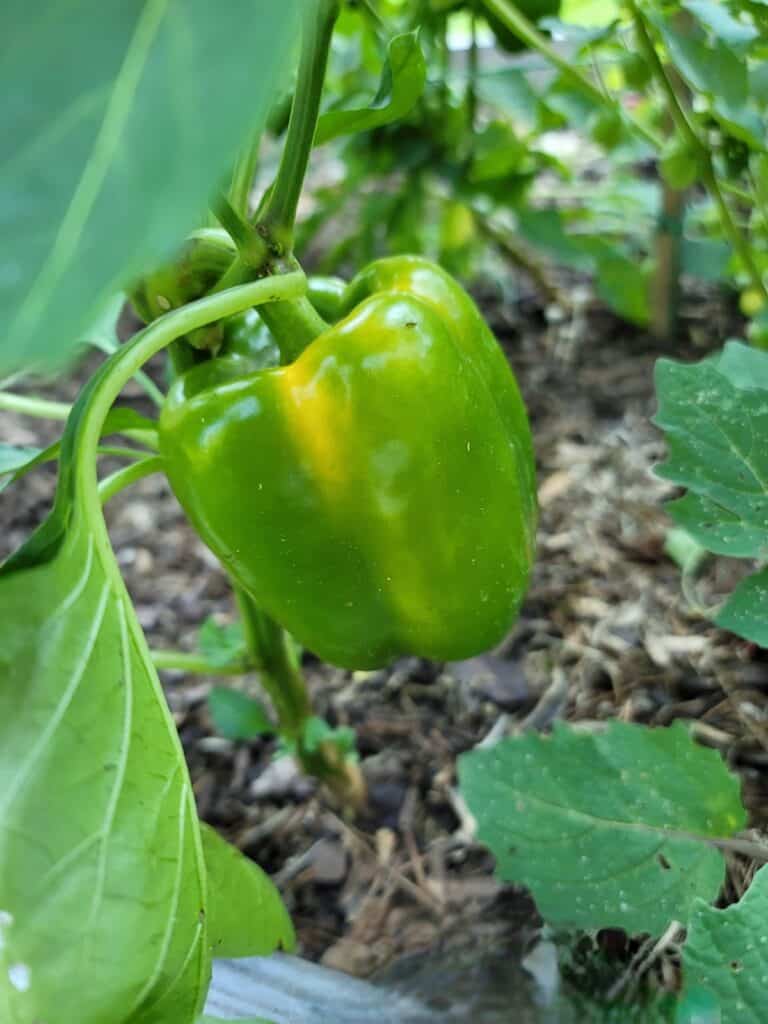
When to Harvest Peppers
Peppers can be harvested when they are green or any color in between. It is important to note that while peppers can be eaten at any stage, the flavor changes with the stages. Sweet peppers typically ripen faster than hot peppers. When harvesting sweet peppers, I like to let them fully ripen before harvesting. Hot peppers I tend to harvest when green. When fully ripe, hot peppers are at their spiciest. You will learn when you like to harvest certain varieties the more you grow them.
I hope you found this post helpful! Happy gardening!
